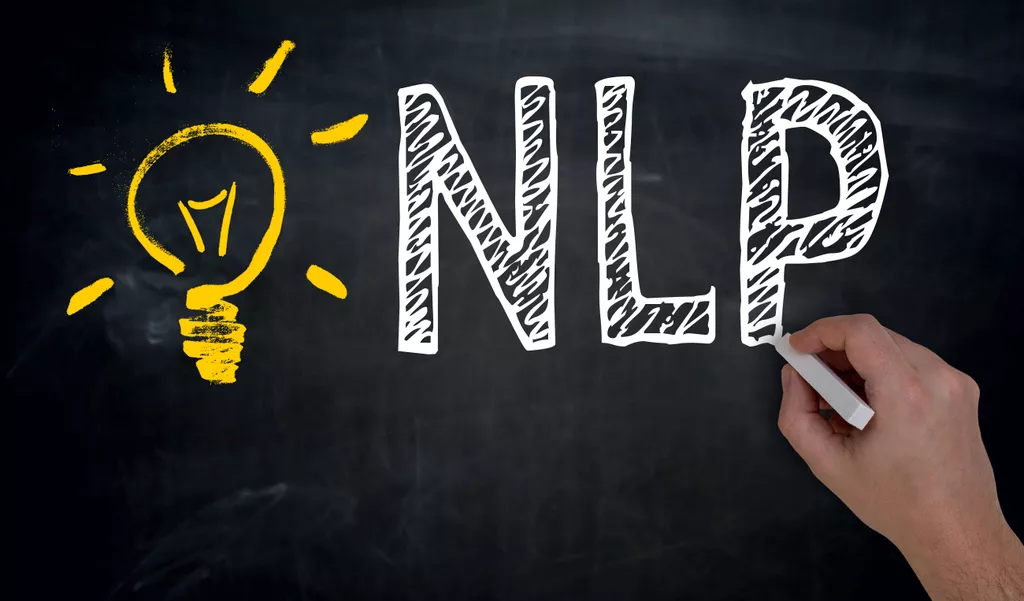Next time, it will be able process the same scenario itself without human input. For instance, at a call center, customer service agents receive support from cognitive systems to help them engage with customers, answer inquiries, and provide better customer experiences. Cognitive automation describes diverse ways of combining artificial intelligence (AI) and process automation capabilities to improve business outcomes. Cognitive automation tools such as employee onboarding bots can help by taking care of many required tasks in a fast, efficient, predictable and error-free manner. These tasks can range from answering complex customer queries to extracting pertinent information from document scans.
- It is a unified platform where I can judge my data overall and we can easily decide where we need improvements and what is working well.
- By making RPA efforts more intelligent, adaptive, and reliable, C-RPA puts your business miles ahead of your competitors.
- Perhaps, the easiest way to understand these 2 types of automation, is by looking at its resemblance with human.
- For example, Digital Reasoning’s AI-powered process automation solution allows clinicians to improve efficiency in the oncology sector.
- Using intelligent automation, banks can speed up KYC processing times, reduce error rates, and improve regulatory compliance.
- The COVID-19 aftermath has forever changed the market rules for those willing to stay profitable.
For example, Digital Reasoning’s AI-powered process automation solution allows clinicians to improve efficiency in the oncology sector. The subset of automation concerning specifically business processes is called robotic process automation or RPA. The concept of RPA is not new, and it has already become a standard for optimizing internal processes in enterprises. However, it only starts gaining real power with the help of artificial intelligence (AI) and machine learning (ML). The fusion of AI technologies and RPA is known as Intelligent or Cognitive Automation.
This Week in Cognitive Automation: Intelligent Automation Q&A and more
Process automation tools replaced manual processes for the human worker, AI technologies are creating a digital workforce to make better decisions. Cognitive automation has a place in most technologies built in the cloud, said John Samuel, executive vice president at CGS, an IT consultancy. The good news is that you don’t have to build automation solutions from scratch. While there are many data science tools and well-supported machine learning approaches, combining them into a unified (and transparent) platform is very difficult. RPA encompasses software that can be easily programmed to perform basic tasks across applications and thus help eliminate mundane, repetitive tasks completed by humans. Closing the gap on efficiency, resiliency, and customer experience through the full range of intelligent automation services.
What are the three main types of applications of cognitive technologies?
A useful definition of artificial intelligence is the theory and development of computer systems able to perform tasks that normally require human intelligence. We found that applications of cognitive technologies fall into three main cat- egories: product, process, or insight.
The best way to reach your automation goals and get started quickly is to build a strategic roadmap. While RPA is a huge factor in digital transformation, with some amazing benefits, it is just one factor. It’s easy to get swept away and start looking at RPA as a magic solution for all obstacles in an organization. From better business outcomes, to improved employee engagement, there are many benefits of RPA.
Ways Intelligent Automation Could Help Avoid Trillions In Losses
But they should also be based on standardized, predictive rules with clear (if complex) instructions to work with RPA. Typically, processes that require creativity or problem-solving aren’t suited to RPA. Certain points in any customer experience (CX) journey will benefit from the ‘human touch’. For instance, with robots working alongside employees, customers can expect quicker response times.
Indian wrestlers hold candlelight march demanding arrest of sports … – Arab News
Indian wrestlers hold candlelight march demanding arrest of sports ….
Posted: Wed, 24 May 2023 07:00:00 GMT [source]
But with computer vision, this issue can be overcome as RPA can read from any screen on the desktop with its AI capabilities. But there are certain areas of AI, while used in combination with RPA, can make automation more intelligent. Please be informed that when you click the Send button Itransition Group will process your personal data in accordance with our Privacy notice for the purpose of providing you with appropriate information. Some of these use cases have already seen their implementations, mostly via custom engineering.
Looking to optimize business processes for better efficiency and ROI?
In cognitive computing, a system uses the following capabilities to provide suggestions or predict outcomes to help a human decides. Similarly, in the software context, RPA is about mimicking human actions in an automated process. Look at the robotic arms in assembly lines, such as automotive industry. A robot doesn’t have to “think”, but to repeatedly perform the programmed mechanical tasks.

With robots making more cognitive decisions, your automations are able to take the right actions at the right times. And they’re able to do so more independently, without the need to consult human attendants. With AI in the mix, organizations can work not only faster, but smarter toward achieving better efficiency, cost savings, and customer satisfaction goals.
Fourth Industrial Revolution: How Can Cognitive Automation Reinvent How We Work?
Supporting this belief, experts factor in that by combining RPA with AI and ML, cognitive automation can automate processes that rely on unstructured data and automate more complex tasks. “This makes it possible for analysts, business users, and subject matter experts to engage with automated workflows, not just traditional RPA developers,” Seetharamiah added. Both RPA and cognitive automation make businesses smarter and more efficient. In fact, they metadialog.com represent the two ends of the intelligent automation continuum. At the basic end of the continuum, RPA refers to software that can be easily programmed to perform basic tasks across applications, to helping eliminate mundane, repetitive tasks performed by humans. At the other end of the continuum, cognitive automation mimics human thought and action to manage and analyze large volumes with far greater speed, accuracy and consistency than even humans.
- Cognitive automation tools can handle exceptions, make suggestions, and come to conclusions.
- To avoid this, it is essential to involve people in identifying automation opportunities and affirming their value.
- Below we will list some typical use cases of cognitive automation and robotic process automation.
- Thus, cognitive automation in insurance is helping companies become more efficient, reduce costs, and better manage their operations, ultimately providing a more valuable customer experience.
- From hyperautomation to low-code platforms and increased focus on security, learn about the latest developments shaping the world of automation.
- Unfortunately, only a few companies can satisfy all the requirements right at the beginning of their journey and most still act at their sole discretion.
Cognitive automation refers to the head work or extracting information from various unstructured sources. If your digital supply chain management has cognitive automation capabilities, yes. Cognitive automation technology works in the realm of human reasoning, judgement, and natural language to provide intelligent data integration by creating an understanding of the context of data. Helping organizations initiate or enhance their RPA journeys, Softtek combines emerging and traditional technologies with market-savvy talent. With cross-industry learnings gained from our 20+ years of automation experience, we bring the needed cohesion and upgrade to enterprises’ automation journeys. The scale that foundation models and, consequently, LLMs enjoy over earlier generations of deep learning models sets them apart from those models.
Example – Insurance Industry
By leveraging it, businesses can reduce costs, eliminate manual labor, improve employee efficiency, and increase competitive advantage in the market. Compared to other types of artificial intelligence, cognitive automation has a number of advantages. Cognitive automation solutions are pre-trained to automate specific business processes and require less data before they can make an impact. They don’t need help from it or data scientist to build elaborate models and are intended to be used by business users and be up and running in just a few weeks.
And unlike a person rushing a task, this speed comes at no risk to the quality of the output. The former is focused on individual automations for specific tasks, and can be considered a form of wider BPA. BPA aims to automate all elements of end-to-end – often complex – processes.
Real World Use Cases of Intelligent Process Automation (IPA)
It is flexible by design, so we can easily customize the existing pipelines for your business cases. Cognitive business automation is real — and you can start using it today. The Cognitive Mill™ platform has sophisticated pipeline and process management as well as monitoring, administration, and scaling options for each of our customers and our team. The so-called ‘eyes’ workers deal with scaling and performance, and the ‘decision’ workers deal with the whole timeline representations. The QBIT (internal name) is the core microservice that is responsible for all business logic of our platform, including pipeline configuration and processing flows.
Robotic process automation is a software technology (scripts) that mimics human actions using machine learning (ML) algorithms and various technologies like natural language processing (NLP), deep learning, and others. —Well, acting basically as digital workers, these bots can take on rule-based, repetitive tasks. They scan and understand what’s happening on a screen, complete keystroke sequences, then process the collected data just like real people do. Robotic Process Automation (RPA) is undoubtedly a hot topic, offering intriguing promises and capabilities to industries of all colors. It allows organizations to enhance customer service, expedite operational turnaround, increase agility across departments, increase cost savings, and more. When combined with advanced technologies like machine learning (ML), artificial intelligence (AI), and data analytics, automating cognitive tasks is on the horizon.
What is the difference between AI and cognitive AI?
In short, the purpose of AI is to think on its own and make decisions independently, whereas the purpose of Cognitive Computing is to simulate and assist human thinking and decision-making.

